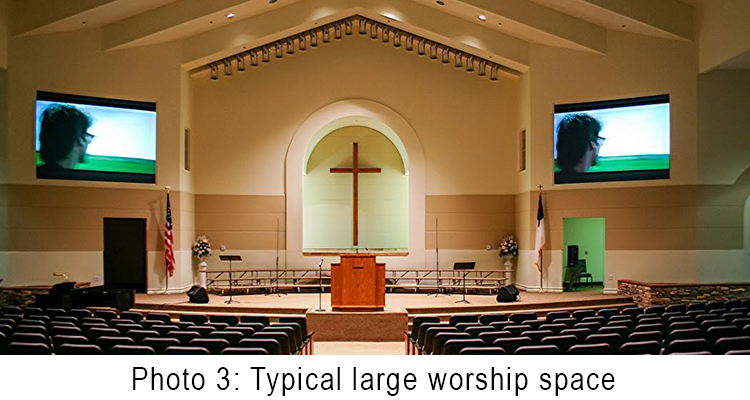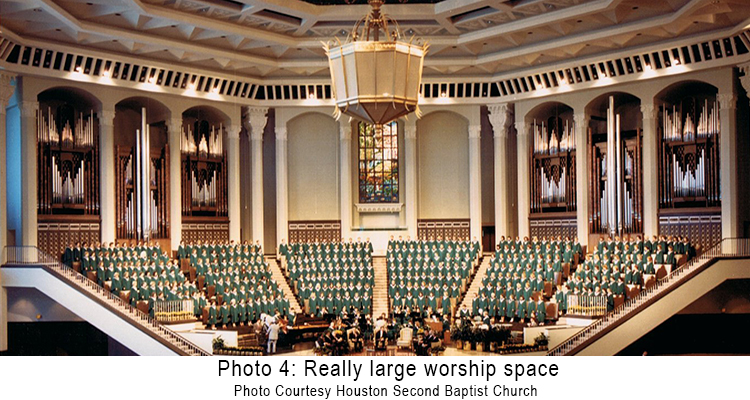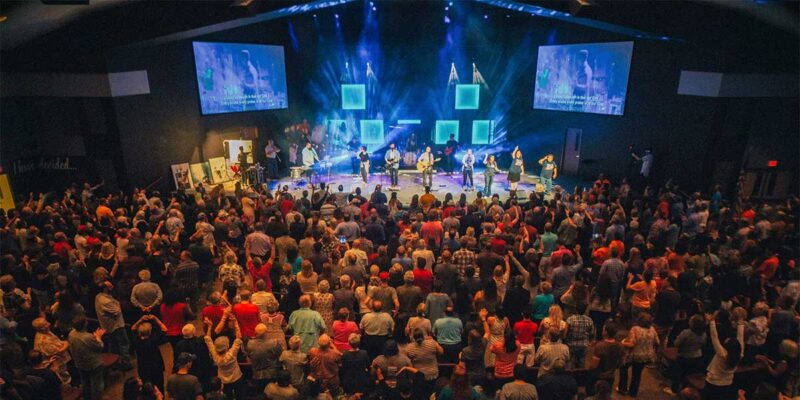The Mix in the Room
The art and science (for it is both) of live sound reinforcement in any worship space must take into consideration a large number of factors unique to HOW sound. For example, you may well have to mix speech, recorded music, live music, professional and non-professional speakers, musicians, to serve an audience (congregants) that will literally span multiple generations.
It is not atypical to have very young children and very senior citizens in the same service, for example. Each of these groups has specific auditory needs, sensitivities and comfort levels. How do you balance all of that without sacrificing something, somewhere? Well, candidly speaking — you don’t!
Now let’s put that intensely complex and conflicting set of variables into a physical space that may or may not be amenable to the use of sound reinforcement technology. And finally let’s blend in the use of part-time volunteer AV team members and a hardware assortment that may well cover an age range that mirrors the congregation — from brand new to seriously old.
Could this be a recipe for disaster — absolutely! Does it need to be — ABSOLUTELY NOT!
Defining the Environment
Let’s take a look at four typical example of worship spaces — small, average, large and very large (mega-church sized) for reference.



Based on the research verified and used in our previous article, North America is home to over 350,000 congregations. The majority of these would decisively fall into the kind of space illustrated by either Photo 1, 2 or 3 above, that is small, medium or larger sized spaces. Only a very small (about 1 percent or 3,000 to 4,000) would be represented by the kind of space shown in Photo 4 — a mega-church (defined as capable of seating over 1,500 congregants minimum).
Clearly, the requirements of the sound reinforcement system and its operation in a very large mega-church sized space are considerably different from anything else in the HOW size groupings. It is, in reality, a lot closer to a popular music or Broadway show live tour sound kind of approach and the equipment reflects those needs.
Because the style and approach to mixing a service for such an enormous audience is really a highly specialized sub-set of the larger topic of mixing sound for worship spaces and it affects a limited number of worship spaces we will not cover it in this article. Much has already been written on that topic elsewhere and many competent articles can be found if needed.
Setting the Scene
Given the enormous number of worship space, physical locations and the various size ranges noted above, there are infinite variations on the actual layout, seating plan, design, interior finish materials and each of those will have an effect on the performance and perception of whatever sound system is installed. Adding to that recipe is the type of worship service and its components.
All of these factors will have an impact on the final perceived sound in the worship space. It is the function of those blending (mixing) the elements that make up the service to ensure that all of this fits together in something close to a coherent presentation that meets the service and congregational needs. As you may assume by now this is no simple or straightforward task.
Begin With Your Ears
In order to put a viable mix together and deliver a professional quality result the most important thing to understand and investigate is THE ROOM ITSELF! Regrettably, most AV team members worry about hardware (and software) far more than they consider the space itself. This technology-heavy approach is not going to help anyone build or deliver the best mix for that space, service style and content. The hardware is only a tool, it is not the endpoint.
So the first thing anyone who has mix responsibilities or the whole team if possible should do is walk out into the room and just sit and listen.
What?!
Yes, just sit in a location closest to the center of the congregational seating and close your eyes and LISTEN to the room itself. It has a sound — in fact, many sounds — but if you do not take the time to listen for them and pay attention you will never understand what they are and how they will impact your final product!
Next have someone, preferably a regular member of the worship team, go to the central microphone or pulpit and talk, even use an old sermon or homily if feasible so it will mirror the kind of language and content within a typical service. Make sure the settings on your console and system are the standard ones used for a service, nothing more, nothing less and that the microphone is the one used normally for that purpose. You need to hear what it will sound like to the congregation.
Again, take the time to just sit and listen to the room and the spoken word in the room. Remember that it will be a little less reverberant when the congregation is present since people are a very nice broadband sound absorber.
How natural does it sound? Does the quality of the voice as reinforced match the voice you hear normally — it should! What else do you hear? Is anything creating interference with understanding the spoken word? If so, stop now and track that problem down and resolve it as much as feasible or at least identify the source(s) so a solution can be developed and implemented.
Because the spoken word is the core of any service it must be clean, intelligible and un-distorted in any way. This is the most important single goal to achieve.
The Sound of the Room
Go back and look again at the first three photos. Do you think each of those spaces will sound the same or will each have a sound footprint that is unique to its style and design? Wait — think about your answer. If you’re responsible for the sound in any one of those and you haven’t imprinted the sound of the room in your brain, you will not understand what you have to do to make your service mix work in that specific space and that should be the only goal that matters.
I have lost count of the number of times we have been asked to solve a supposed sound system problem blamed on the hardware, the design, the installation or any one of a host of similar causes, when the real answer was that the mix itself was wrong for the space.
For example, take the worship space shown in Photo 2 — a fairly typical mid-sized facility. It’s largely rectangular, a lot of stained glass (hard) surfaces, wood pews, slightly arched ceiling, choir behind the pulpit, a piano and probably other musical sources as well and a center stage located lectern/pulpit. Without even walking in, it would be clear that there are going to be reflections, potentially hard echoes and probably speech intelligibility issues due to the long narrow seating and distance of the rear congregants from the pulpit. Hopefully, the sound system design took these issues into account, but as many of you will know, it is also likely that it didn’t fully address them effectively.
If you are controlling the sound of a service in this space, where would you concentrate your efforts first and what would you relegate to a lower priority?
In my experience in many such spaces, the first choice would be the word, then the song/musical portion of the service including choir and then anything else. Blending the music, instruments and the choir into a smooth overall whole is essential to delivering an even sounding presentation to the whole congregation, but you must be sure that the spoken word can still rise out of that mix and be clearly and distinctly heard and understood.
But if you don’t know what the physical room is “adding” or “subtracting” from what you thought was the sound of your mix, you are essentially flying blind and you will never make the mix work in the room. This is why it is so essential to imprint your room’s ‘sound’ on your audio brain so you can build a total mix that takes the room into account and delivers the desired goal every service.
Each of the worship space examples above will have its own sound and each service will have to find a happy compromise of elements, blended together to work in that space.
A little homework and some careful listening will go a long way to helping you build that mix and achieve your objective. Knowing your room, knowing your worship team and its goals and understanding how you can help them all fit together will be worth every minute you spend on the process, every service!
If your service includes a praise band with electric or electronic instruments, then using a direct box will dramatically reduce sound levels on-stage and thus in the space. For a very useful free comparison of these devices, go here.





